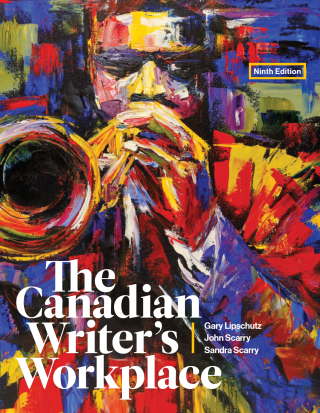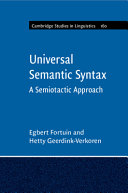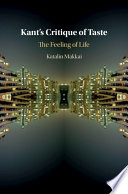Buy CANADIAN WRITER’S WORKPLACE 9CE, 9th Edition PDF ebook by author Lipschutz – published by Cengage Learning Canada Inc. in 2021 and save up to 80% compared to the print version of this textbook. With PDF version of this textbook, not only save you money, you can also highlight, add text, underline add post-it notes, bookmarks to pages, instantly search for the major terms or chapter titles, etc.
You can search our site for other versions of the CANADIAN WRITER’S WORKPLACE 9CE, 9th Edition PDF ebook. You can also search for others PDF ebooks from publisher Cengage Learning Canada Inc., as well as from your favorite authors. We have thousands of online textbooks and course materials (mostly in PDF) that you can download immediately after purchase.
Note: e-textBooks do not come with access codes, CDs/DVDs, workbooks, and other supplemental items.
eBook Details:
Full title: CANADIAN WRITER’S WORKPLACE 9CE, 9th Edition
Edition: 9th
Copyright year: 2021
Publisher: Cengage Learning Canada Inc.
Author: Lipschutz
ISBN: 9780176831004, 9780176887940
Format: PDF
Description of CANADIAN WRITER’S WORKPLACE 9CE, 9th Edition:
The Canadian Writer’s Workplace, Ninth Canadian Edition, is an easy-to-use solution that aims to inspire and guide students on the road to achieving clarity in their writing. With this product, students develop paragraph- and essay-writing skills that are crucial for success in their post-secondary career and beyond. This is a three-in-one solution that includes a review of basic grammar and sentence skills, covers writing steps and strategies, and ends with a selection of readings. Available in a printed text format and as an ebook within MindTap, our online learning platform, everything your students need to build confidence in their written communication skills is between two covers!
Table of Contents of CANADIAN WRITER’S WORKPLACE 9CE, 9th Edition PDF ebook:
CoverTitleCopyrightWhy Am I Here?PrefaceUnit I: Sentence SkillsChapter 1 Parts of Speech: OverviewQuick Quiz1. What Are Nouns?2. What Are Pronouns?3. What Are Adjectives?4. What Are Verbs?5. What Are Adverbs?6. What Are Prepositions?7. What Are Conjunctions?8. What Are Interjections?9. What Are Articles?Working Together: Puzzle Pieces and Sentence PartsChapter 2 Recognizing Subjects and VerbsQuick QuizWhy Should We Use Complete Sentences When We Write?What Is a Complete Sentence?How Do You Find the Subject of a Sentence?Finding the Subject in Sentences with Prepositional PhrasesWhat Are the Other Problems in Finding Subjects?How Do You Find the Verb of a Sentence?Chapter Review ExercisesWorking Together: Singling Out SubjectsChapter 3 Solving Verb ProblemsQuick QuizWhat Are the Principal Parts of the Irregular Verbs?Avoiding Unnecessary Shifts in Verb TenseWhat Is the Sequence of Tenses?How Do You Use the Present Perfect and the Past Perfect Tenses?What Is the Difference between Active and Passive Voice?What Is the Subjunctive?Other Problems with VerbsChapter Review ExercisesWorking Together: Verbs, Not VerbiageChapter 4 Subject-Verb AgreementQuick QuizSubject-Verb Agreement within the SentenceSpecial Problems in Making Verbs Agree with Their SubjectsChapter Review ExercisesWorking Together: Magazine MayhemChapter 5 Coordination and SubordinationQuick Quiz 1Quick Quiz 2What Is Coordination?Combining Sentences Using CoordinationWhat Is Subordination?Combining Sentences Using SubordinationHow Do You Punctuate a Clause with a Relative Pronoun?Chapter Review ExercisesWorking Together: Practising Coordination and SubordinationChapter 6 Correcting FragmentsQuick QuizRecognizing and Correcting Sentence FragmentsWhat Is a Fragment?How Do You Correct a Fragment?Don’t Confuse Phrases with SentencesMaking a Complete Sentence from a Fragment That Contains a VerbalChapter Review ExercisesWorking Together: Editing Ad CopyChapter 7 Correcting Run-OnsQuick QuizRun-Ons Are Not Long SentencesWhat Kinds of Run-Ons Are There?How Do You Make a Complete Sentence from a Run-On?Chapter Review ExercisesWorking Together: Plot without Run-OnsChapter 8 Parallel StructureQuick QuizWhat Is Parallel Structure?Chapter Review ExercisesWorking Together: Practise Making Sentences ParallelChapter 9 PronounsQuick QuizPronouns and CasePronoun-Antecedent AgreementMissing, Ambiguous, or Repetitious PronounsChapter Review ExercisesWorking Together: Practise with PronounsChapter 10 Modifiers: Misplaced and DanglingQuick QuizWhat Are Modifiers?What Are Misplaced Modifiers?What Are Dangling Modifiers?Chapter Review ExercisesWorking Together: Modifiers Making the DifferenceChapter 11 PunctuationQuick QuizCorrect Punctuation: A Strong Indicator of a Writer’s CompetenceThe Eight Basic Rules of the CommaOther Marks of PunctuationChapter Review ExercisesWorking Together: Designing Punctuation TestsChapter 12 CapitalizationQuick QuizTen Basic Rules for CapitalizationChapter Review ExercisesWorking Together: Designing Capitalization TestsChapter 13 Unit I Review: Using All You Have LearnedEditing Sentences for ErrorsEditing Paragraphs for ErrorsWorking Together: Remembering Your Canadian TripUnit II: The Reading-Writing ConnectionChapter 14 Understanding What You ReadYou Are Not AloneReading Strategies1. Previewing2. Taking Notes, Annotating, and Highlighting3. Reading and Answering Questions That Follow the Reading4. Rereading5. Journalling6. Reading Topic Sentences7. Looking Up Words You Don’t Understand8. Looking Up References Online That You Don’t UnderstandWorking Together: The Best Way to Learn Is to TeachChapter 15 Paraphrasing and SummarizingParaphrasingSummarizingAcknowledging the Author (or Attribution)Avoid Unintentional PlagiarismAn Example of Plagiarism and Its Real-Life ConsequencesAnalyzing and CritiquingWorking Together: Summarizing Opposing Points of ViewChapter 16 QuotingText References: Quotations and Paraphrased IdeasHow Much Do You Quote?Short (Integrated) QuotationLonger (Block) QuotationAnalyzing the Quotation or IdeaWorking Together: Celebrity CanadiansChapter 17 Answering the QuestionUnderstanding What Is AskedDirect Answer to a Direct QuestionHow to Write Well under PressureStrategies for Answering Timed In-Class Essay QuestionsExample of an Essay QuestionFrequently Used Terms in Essay QuestionsUsing the Thesis Statement in Essay QuestionsPractising Writing in Response to ReadingWorking Together: Formulating Essay QuestionsUnit III: The Writing ProcessChapter 18 The Four Stages of Writing for a Paragraph or an EssayStage One: PrewritingStage Two: Outlining (or Organizing)Stage Three: The Rough DraftStage Four: Postwriting (Revising, Editing, and Proofreading)Working Together: Prewriting ActivitiesChapter 19 The ParagraphWhat Is a Paragraph?What Does a Paragraph Look Like?What Is a Topic Sentence?How Do You Find the Topic in a Topic Sentence?What Is a Controlling Idea?Choosing Your Own Controlling IdeaWhat Is a Supporting Detail?Two TypesQualities of Good Supporting DetailHow Do You Make Supporting Details Specific?The Concluding SentenceSample Outline FormatWorking Together: Controlling Ideas and ?Supporting DetailsChapter 20 The EssayWriting Is a SkillThe Components of an EssayMoving from the Paragraph to the EssayA Third Format: The Preliminary EssayStructure of the Preliminary EssayModel Preliminary Essay I: Good HabitsModel Preliminary Essay II: Benefits of MarijuanaFeatures of the EssayWhat Is a Thesis Statement?The Introductory ParagraphUsing Transitions to Move from One Idea to the NextThe Concluding ParagraphTitlesSample Outline FormatWorking Together: Education Endangered?Chapter 21 StyleBeyond Sentence SkillsWhat Is Style?Word Economy (Absence of Wordiness)Clarity versus Big Words and Long SentencesFormal LanguageActive versus Passive VoiceWord OrderSentence VarietyBreaking the RulesBreaking Up the TextRepetition of WordsAudience and TonePurposeConsistencyChoice of PunctuationAvoidance of Abstract TermsAvoidance of JargonWorking Together: Changing the Style of Peer WritingChapter 22 Revising and EditingThe Final StageProofreadingThe Right Conditions for the TasksA Sample Student Essay in Its Fourth StageDay CarePreparing the Final CopyA Student Essay in Progress: The Revised VersionWorking Together: Revising and Editing ActivityChapter 23 The Research PaperThe Research PaperStandard Essay StructureThe Literary Research EssayThe General Topic Research EssayInternet versus Library ResearchAnalyzing the Legitimacy of Online SourcesUsing QuotationsWorking Together: Finding Appropriate SourcesChapter 24 DocumentationDocumentationTwo Mandatory Parts of Documentation: Internal and EndAmerican Psychological Association (APA)Modern Language Association (MLA)Sample Research PaperWorking Together: Documenting SourcesUnit IV: Writing Strategies for the Paragraph and EssayChapter 25 ArgumentationWhat Is Argumentation?Argumentation versus PersuasionPersuasive Appeals That Are Not LogicalOther Strategies for ArgumentationWhat Is Critical Thinking?More Tools and Components of ArgumentationUnderlying AssumptionsAnalyzing the Intention of Argument: The Importance of VirtueWe Become What We CommunicateArgumentative TechniquesCommon FallaciesWriting the Paragraph of ArgumentationModel Paragraph: Clues of an Unhappy EndingDeveloping Essays: ArgumentationModel Essay: Ophelia’s TerrorWorking Together: Identifying Good and Bad ArgumentsChapter 26 Cause and EffectWhat Is Cause and Effect?Two Types of Cause and Effect Paragraphs or EssaysDeveloping Paragraphs: Cause and EffectModel Paragraph: Recipe for DisasterWriting the Cause or Effect Paragraph Step by StepOn Your Own: Writing Cause and Effect Paragraphs from Model ParagraphsModel Paragraph: Titanic BlundersDeveloping the Cause and Effect EssayModel Essay: Whose Choice Is It, Anyway?Working Together: Identifying Causes or EffectsChapter 27 Comparison and/or ContrastWhat Are Comparison and Contrast?Developing Paragraphs: Comparison and/or ContrastTwo Methods: Point-by-Point and BlockModel Paragraph: The Freedom of Freelancing (I)Model Paragraph: The Freedom of Freelancing (II)Tips on Transitions: Like versus AsWriting the Comparison and/or Contrast Paragraph Step by StepThe Comparison and/or Contrast EssayModel Essay: City Life Beats the Small Town BluesWorking Together: Reaching ConsensusChapter 28 ProcessWhat Is Process?Developing Paragraphs: ProcessModel Paragraph: Planning Your PresentationModel Paragraph: Years in the MakingCoherence in Process: Order in Logical SequenceWriting the Process Paragraph Step by StepOn Your Own: Writing Process Paragraphs from Model ParagraphsModel Paragraph: Road to RestfulnessModel Paragraph: Waspy WaysWriting the Process EssayModel Essay: Replacing a TireWorking Together: Campus WoesChapter 29 DescriptionWhat Is Description?Developing Paragraphs: DescriptionModel Paragraph: Delicatessen DecorWorking with Description: Selecting the Dominant ImpressionModel Paragraph: A Day in the Life
(I)Model Paragraph: A Day in the Life
(II)Working with Description: Sensory ImagesCoherence in Description: Putting Details in Spatial OrderWriting the Descriptive Paragraph Step by StepOn Your Own: Writing Descriptive Paragraphs from Model ParagraphsModel Paragraph: Mother FortressWriting the Descriptive EssayModel Essay: A Monumental ExperienceWorking Together: The Hunt for a RoommateChapter 30 DefinitionWhat Is Definition?Developing Paragraphs: DefinitionModel Paragraph: The Meaning of MythWriting the Definition Paragraph Step by StepDeveloping an Essay of DefinitionModel Essay: Love HurtsWorking Together: What Does the Cover Mean to You?Chapter 31 ClassificationWhat Is Classification?Developing Paragraphs: ClassificationModel Paragraph: Nice and Neighbourly?Making Distinct CategoriesWriting the Classification Paragraph Step by StepDeveloping an Essay of ClassificationModel Essay: The Evolution of SpiritualityWorking Together: Brainstorming for ClassificationChapter 32 NarrationWhat Is Narration?Developing Paragraphs: NarrationModel Paragraph: Prison-on-WheelsWorking with Narration: Using Narration to Make a PointCoherence in Narration: Placing Details in Order of Time SequenceModel Paragraph: A Day to ForgetWriting the Narrative Paragraph Step by StepOn Your Own: Writing Narrative Paragraphs from Model ParagraphsModel Paragraph: Better Early Than LateWriting the Narrative EssayModel Essay I: Whispers of the DeadModel Essay II: Transparent SilhouetteWorking Together: Spontaneous Creativity or Combustion?Unit V: Major ReadingsA Grain of Gold John ArtibelloBanning Junk Food Leah McLarenHow to Get Happily Married Julia McKinnellA Matter of Postal Codes Ken MacQueenIn the Library Gary LipschutzExcuses, Excuses Adrian LeeI Lost My Talk Rita JoeA Tough Approach That Might Work James C. MortonGrammar and Your Salary Peter HarrisBeyond Cannabis Akwasi Owusu-BempahThe Economic Cost of Depression Gary LamphierThe Other Family Himani BannerjiCyber Misogyny Brett ThroopNot Just Hollywood Leah McLarenWhat’s Missing? Gary LipschutzFace to Face Brian BethuneMonster Chelsea VowelUnit VI: AppendicesAppendix A Distinguishing between Words Often ConfusedAppendix B Answer Key to PracticesAppendix C Solving Spelling ProblemsAppendix D Irregular VerbsGlossaryIndex





